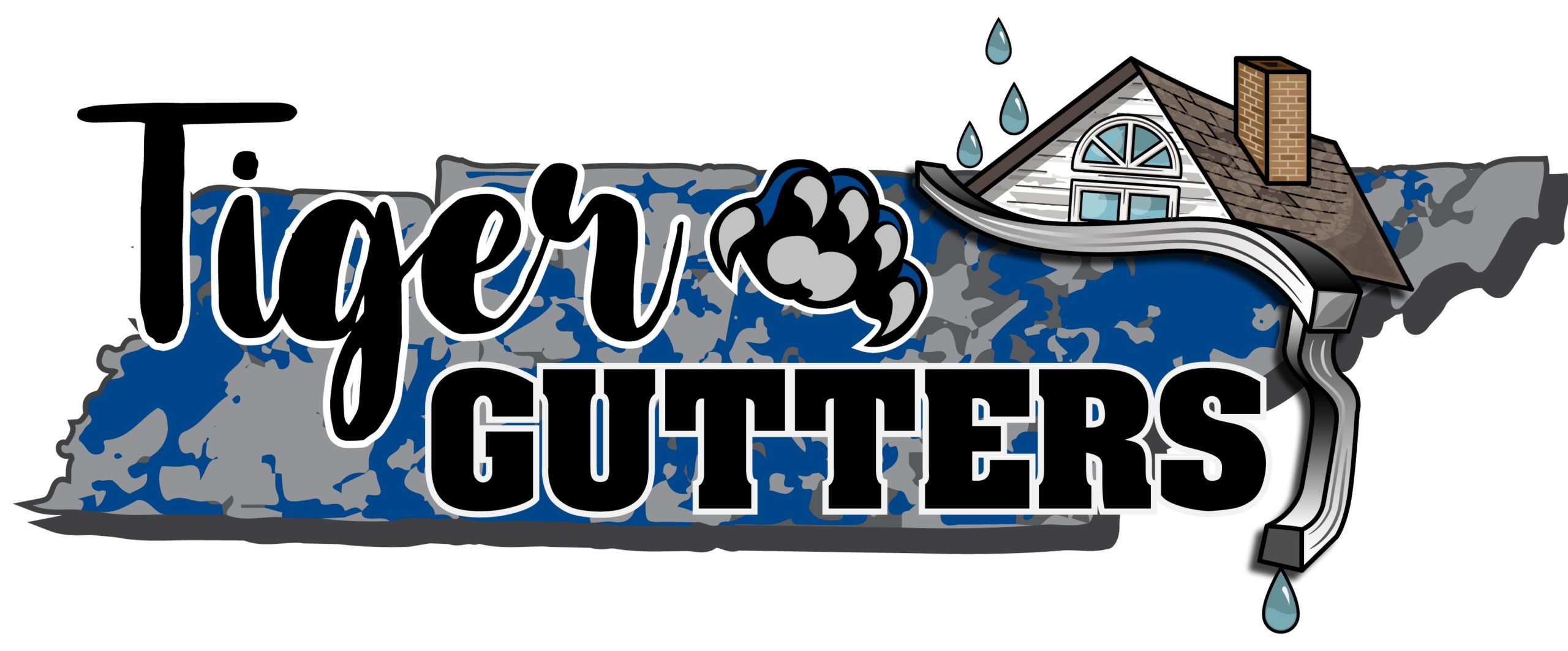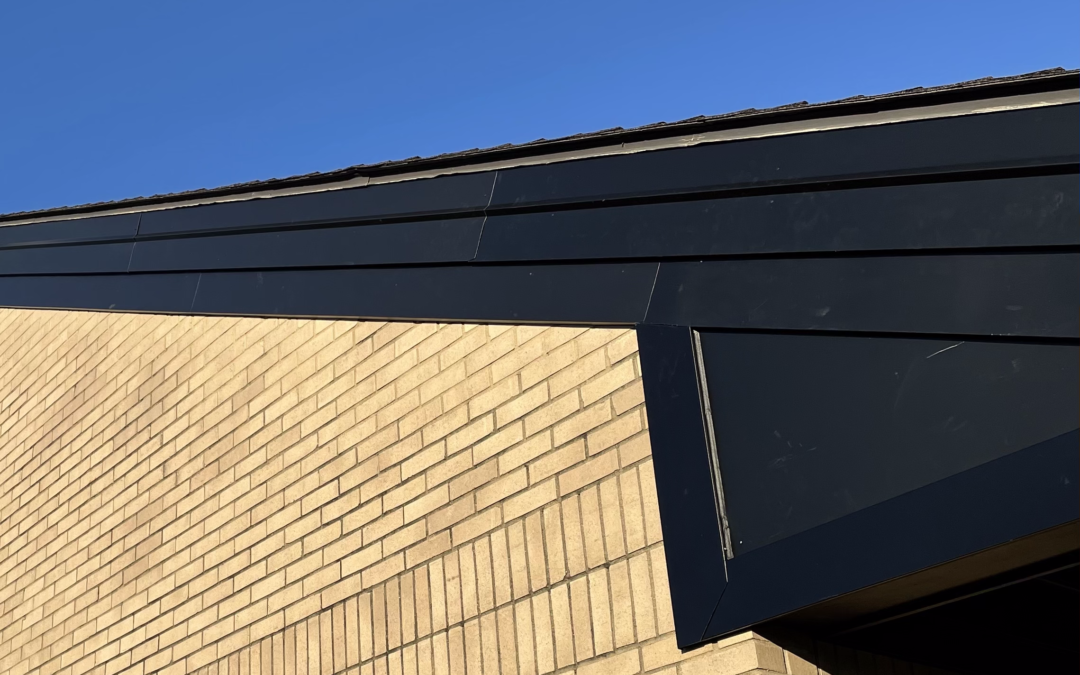When it comes to maintaining the exterior of your home, fascia wrap and trim metal play a crucial role in both protecting and enhancing your property. These components are not only functional but also contribute to the overall aesthetic appeal of your house. At Tiger Gutters, based in Memphis, TN, we understand how important it is for homeowners to be informed about all aspects of home maintenance, including fascia wrap and trim metal. In this comprehensive guide, we’ll cover everything you need to know about these essential elements, including their benefits, materials, and installation considerations.
What is Fascia Wrap?
Fascia is the vertical finishing edge connected to the ends of the rafters or trusses, providing a clean, smooth appearance along the roofline. It helps support the roof’s edge and plays a significant role in attaching the gutters to your home. Over time, fascia boards, typically made from wood, are susceptible to damage from the elements, especially moisture. This is where fascia wrap comes in.
Fascia wrap is a protective layer, usually made from aluminum or vinyl, that covers the exposed wooden fascia boards. The wrap creates a shield that prevents the fascia from rotting, warping, or deteriorating due to prolonged exposure to rain, snow, and sun. By safeguarding the fascia boards, the wrap helps prolong the lifespan of both the fascia and the gutters attached to it.
What is Trim Metal?
Trim metal is another critical element in protecting your home’s exterior. It is a metal cladding, often aluminum or galvanized steel, used to cover and protect various parts of your home’s exterior, including corners, eaves, windows, and door frames. Like fascia wrap, trim metal offers a layer of defense against moisture, UV rays, and general wear and tear, ensuring that vulnerable areas remain intact and functional.
When installed alongside fascia wrap, trim metal offers a seamless, polished appearance, while also providing long-term protection to the areas where your roof and walls meet. It can also be customized to match your home’s color scheme, offering aesthetic versatility.
Benefits of Fascia Wrap and Trim Metal
Both fascia wrap and trim metal offer a range of benefits for homeowners in Memphis and similar climates, where humidity, rain, and sun exposure can take a toll on building materials. Here are some of the key advantages:
1. Enhanced Protection
The primary function of fascia wrap and trim metal is protection. Without these elements, fascia boards and other vulnerable areas of your home’s exterior can be exposed to water, causing them to rot or decay. By adding a protective wrap and trim, you can prevent costly repairs down the line.
2. Reduced Maintenance
One of the biggest advantages of installing fascia wrap and trim metal is the reduction in long-term maintenance. Because the wrap protects wooden fascia boards from moisture damage, you won’t need to repaint, repair, or replace them as often as you would with unprotected wood. Similarly, trim metal shields key areas from damage, reducing the need for frequent touch-ups.
3. Improved Aesthetic Appeal
Fascia wrap and trim metal come in a variety of colors and finishes, allowing you to choose materials that match or complement your home’s exterior. The result is a polished, clean look that can significantly boost your home’s curb appeal.
4. Increased Longevity
By preventing exposure to the elements, fascia wrap and trim metal can significantly extend the lifespan of your fascia boards, trim, and other exterior elements. This is particularly important in areas like Memphis, where fluctuating weather conditions can cause damage to unprotected materials over time.
Materials Used in Fascia Wrap and Trim Metal
Fascia wrap and trim metal are typically made from durable, weather-resistant materials designed to withstand harsh outdoor conditions. The most common materials include:
1. Aluminum
Aluminum is one of the most popular materials for both fascia wrap and trim metal. It is lightweight, resistant to corrosion, and available in a wide range of colors and finishes. Additionally, aluminum is easy to shape, making it ideal for creating custom trim and wraps that fit perfectly on any home.
2. Vinyl
Vinyl is another common material used for fascia wrap. It’s durable, cost-effective, and resistant to moisture, making it an excellent choice for protecting wooden fascia boards. Vinyl fascia wrap is also available in various colors and styles, allowing homeowners to match their home’s exterior easily.
3. Galvanized Steel
Galvanized steel is a robust material often used for trim metal. It’s highly resistant to rust and can withstand extreme weather conditions, making it ideal for areas prone to heavy rainfall or fluctuating temperatures, such as Memphis. While it is heavier and more difficult to install than aluminum, galvanized steel offers unmatched durability.
Installation Considerations for Fascia Wrap and Trim Metal
While fascia wrap and trim metal offer many benefits, there are several factors homeowners should consider before installation. These include:
1. Compatibility with Existing Materials
It’s essential to ensure that the fascia wrap and trim metal are compatible with your home’s existing materials. This includes checking whether your fascia boards are in good condition and can support the installation of a wrap, as well as ensuring that the trim metal matches the style and color of your home.
2. Proper Sealing and Ventilation
During the installation process, it’s crucial to ensure that the wrap and trim are properly sealed to prevent water from seeping in behind the materials. Additionally, if the fascia boards are located near vents or attic spaces, proper ventilation should be maintained to prevent moisture buildup inside the home.
3. Professional Installation
Although fascia wrap and trim metal may seem like a straightforward project, improper installation can lead to long-term issues such as water damage or warping. To ensure a durable and effective installation, it is recommended to consult with a professional who has experience working with these materials.
Maintenance Tips for Fascia Wrap and Trim Metal
Once installed, fascia wrap and trim metal require relatively little maintenance. However, to ensure that they remain in top condition, homeowners should:
- Inspect regularly for damage: Check for any signs of wear, such as dents, cracks, or peeling paint, and address them promptly.
- Clean periodically: Dirt, leaves, and debris can accumulate on fascia wrap and trim metal, so cleaning them regularly can prevent buildup and staining.
- Monitor for moisture issues: Even with the protection provided by wrap and trim, it’s important to ensure that no moisture is seeping behind the materials, which could cause problems in the long run.
Conclusion
Fascia wrap and trim metal are essential components in protecting your home’s exterior, especially in climates like Memphis, where humidity and changing weather conditions can wreak havoc on unprotected materials. By investing in these durable solutions, homeowners can significantly reduce maintenance costs, enhance curb appeal, and extend the lifespan of their home’s exterior features.
At Tiger Gutters, we believe that informed homeowners make the best decisions when it comes to maintaining and protecting their properties. Fascia wrap and trim metal are just two of the many ways to ensure your home stays in top shape for years to come.

